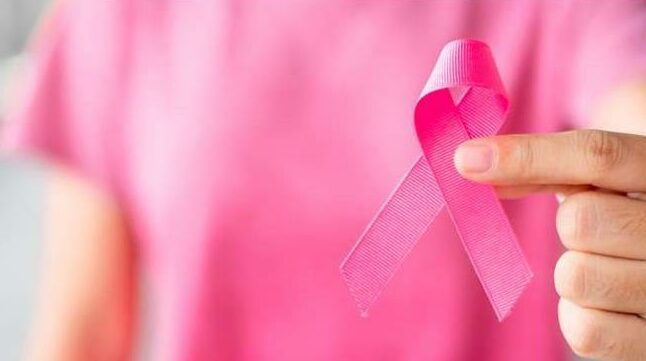

People are more regularly beating breast cancer as better treatments become available. Early detection remains vital, however, because the sooner the disease is detected, the better the prognosis is.
To coincide with Breast Cancer Awareness Month, the Cancer Association of South Africa (Cansa), Food Lover’s Market, and branding and design agency Grid Worldwide recently launched an innovative awareness campaign that urges women to check their breasts for signs of cancer as often as they check their fruit and vegetables.
According to an article published in the Bedfordview and Edenvale News, the Check Them Out campaign – which encourages breast cancer self-screening – will see the fresh produce aisles of all 300 Food Lover’s stores across the country brandished with cheeky stickers to remind women to perform home self-examinations to spot lumps, bumps and other irregularities, which could be signs of breast cancer.
While the campaign aims to get a reaction from shoppers in a good way, the deeper aim is to drive proactive cancer screening, as women treated for early breast cancer are likely to become long-term survivors, according to a study published in 2023 by medical research group, The BMJ.
Besides quirky stickers on fruits and vegetables, the campaign also takes the form of rebranded shopping bags and in-store promotional posters that detail how to conduct a self-examination.
In-store and campaign artwork directs women to Cansa’s website for further information and crucial next steps if they find something suspicious.
Grid Worldwide approached Cansa and Food Lover’s Market to run the campaign.
“Everyone knows someone affected by cancer,” says Lauren Shewitz, creative director at Grid Worldwide.
“As a team, we wanted to create a relevant, memorable, and impactful campaign that not only created awareness, but also brought meaning to marketing, with the ultimate aim of saving lives.”
Terri Coppin Harris, the head of colleague engagement at Food Lover’s Market, says this was an opportunity they could not afford to miss.
“As a retailer that believes in strong family values, we could not pass on the chance to weigh in and support this campaign.
“Breast cancer is still listed as the top invasive cancer reported for South African women, and this made us realise it can easily affect our shoppers and team members.
“We loved the idea of creating a bold reminder in our stores to educate our consumers and our team about self-examination and screening.”
‘Check out your melons’
While shoppers will be reminded to ‘check out their melons’ and ‘feel their avos’ through stickers on selected seasonal fruit, Food Lover’s Market has elevated the campaign in-house by creating an equally strong awareness campaign to engage and inform all Food Lover’s Market team members on the importance of preventative screenings.
“I am confident this campaign will garner the wanted reaction. We are aiming to grab shoppers’ attention in a big way as it is not every day you see fruit linked to some of our most intimate parts.
“Hopefully, it will make our consumers stop, think, and take action,” says Coppin Harris.
Cansa’s national manager of health promotion Lorraine Govender says the organisation is excited about the campaign.
“Together, we are raising awareness in a proactive and meaningful way, and delivering on the message that early detection is critical.
“We want to urge everyone to be aware of their bodies. Look out for anything unusual, and get checked out early – it could save your life.”
Changing behaviour
According to the National Cancer Registry 2019, breast cancer remains the most prevalent cancer among women, and females have a one in 27 lifetime risk of developing it.
In addition, according to research by Bruni et al. (2019), the breast is the leading cancer site in women throughout the world.
It is also the leading cause of female cancer deaths in almost all countries, except the most economically developed, where it is second to lung cancer.
While many factors such as age, family history, genetics, and even diet play a role in the chances of developing breast cancer, early detection plays a key role in effective treatment and outcomes.
According to Cansa, breast self-examination in African women is very low and needs to be driven through awareness tactics for behavioural change.
Do what’s best for your breasts
According to an article published by the Boksburg Advertiser, statistics indicate that 23% of all diagnosed cancers are breast cancer.
Dr Peter Schoub of the Breast Imaging Society of South Africa (BISSA) emphasises the importance of early detection, through regular self-examinations, and annual mammograms.
Practising in a sub-speciality group of the Radiological Society of South Africa, Schoub says early detection of breast cancer dramatically improves survival rates and reduces the need for aggressive treatment, such as radiation and chemotherapy.
“One of the country’s most significant challenges is the late-stage diagnosis of breast cancer. Advanced stages of the illness reduce the chances of successful treatment,” he says.
He adds that although the likelihood of breast cancer becomes more common as one gets older, diagnosis is on the rise among women in their 30s.
“Young women experience more aggressive breast cancer that progresses rapidly and would be at an advance stage by the time of diagnosis, increasing the risk of cancer spreading to other parts of the body,” says Schoub.
“Late diagnosis is often due to a lack of awareness, limited access to healthcare facilities and socioeconomic inequalities.
“Although most of the major medical schemes offer a yearly complimentary mammogram screening to women over the age of 40, only about 20% take advantage of this service.
“Breast cancer affects women of all ages, races and socio-economic circumstances. We urge women to regularly check their breasts for any irregularities and have a clinical breast examination by a GP, gynaecologist, or nurse at least once a year.
“Any abnormality, regardless of age or family history, warrants an immediate medical consultation with a healthcare professional,” he adds.
Schoub emphasises that the goal of breast cancer screening is to identify the disease before it causes symptoms.
Regular screening is more likely to find breast cancers when they are small and still limited to the breast area, which is vital for successful treatment and survival since the size and extent of the spread are crucial in predicting the outcome of the diagnosis.
Who is at risk of developing breast cancer?
Every woman is potentially at risk of getting breast cancer, however, certain factors place them in a higher risk category, including:
The risk of developing breast cancer increases as one gets older, however one out of eight invasive breast cancers are found in women younger than 45.
- Family history
Women with close blood relatives who have had breast cancer are at higher risk.
- Personal history
A woman with cancer in one breast has a three to four times increased risk of developing a new cancer in the other breast or in another part of the same breast.
- Dense breast tissue
Women with dense breast tissue (as identified on a mammogram) have more glandular tissue and less fatty tissue and thus a higher risk of breast cancer.
- Overweight or obese women
Research has shown that being overweight or obese increases the risk of breast and other cancers.
Excessive alcohol consumption, lack of physical activity, smoking, and diets high in saturated fats contribute to risk.
- Hormonal factors
Women who have not had a full-term pregnancy or have their first child after age 30 have a higher risk of breast cancer compared to women who gave birth before age 30.
Breastfeeding can lower breast cancer risk, especially if a woman breastfeeds for longer than one year.
Women who started menstruating younger than age 12 have a higher risk of breast cancer later in life, the same is true for women who go through menopause when they are older than 55.
Current or recent past users of hormone replacement therapy have a higher risk of being diagnosed with breast cancer.
How to self-examine your breasts
The breast changes throughout the menstrual cycle and it is important to always self-examine at the same time of the month, usually a week after your period when your breasts are less tender due to fluctuations in hormone levels.
- Visual examination
Sit or stand, without clothing, in front of a mirror with your arms to your side and look for changes in size, shape, symmetry, puckering, and dimpling.
- Physical examination
Lay down so that your breast tissue spreads out making it easier to feel, or in the shower using soap to glide more easily over your breasts.
Use the pads of your three middle fingers, not your fingertips, to examine.
Apply different pressure levels, light to feel the breast tissue closest to the skin, medium to feel deeper, and firm to feel the tissue closest to the chest and ribs.
Use a methodical technique, such as beginning near the collarbone, and then moving towards the nipples, in a clockwork fashion.
Allow enough time and don’t rush the examination.
Signs to look out for
Many lumps may turn out to be harmless, but it is essential that all of them are checked.
Visit your healthcare provider if you notice any changes, such as swelling of all or part of the breast.
Other symptoms may include:
- Skin irritation, dimpling or ridges on the skin.
- Nipple pain or the nipple turning inward.
- Redness, scaliness or thickening of the nipple or breast skin.
- A nipple discharge other than breast milk.
- A lump or knot near the underarm area.
.



